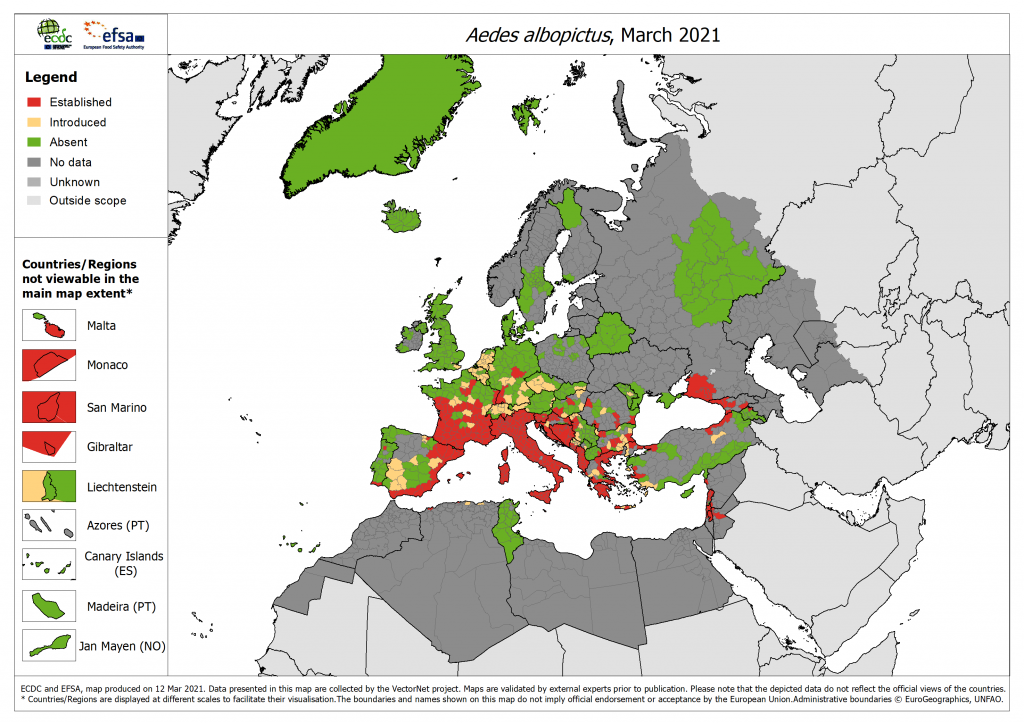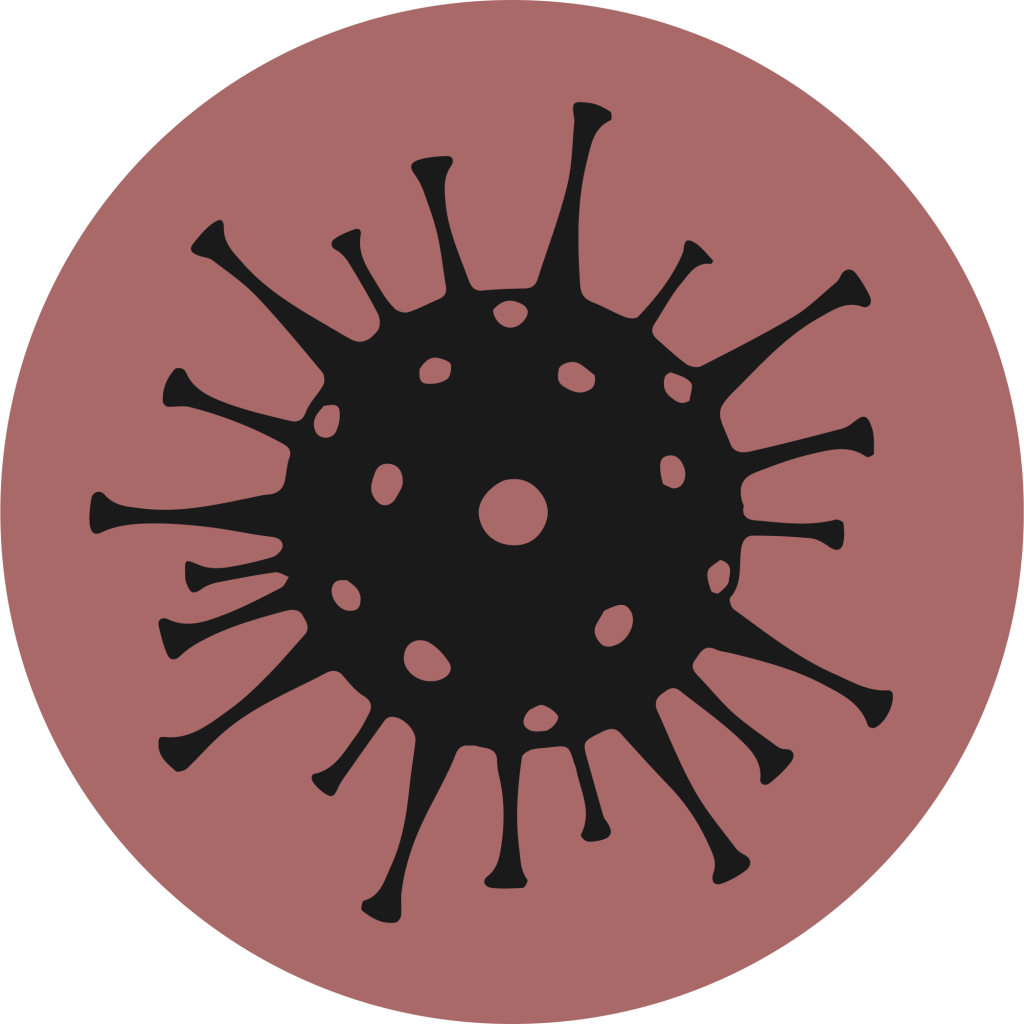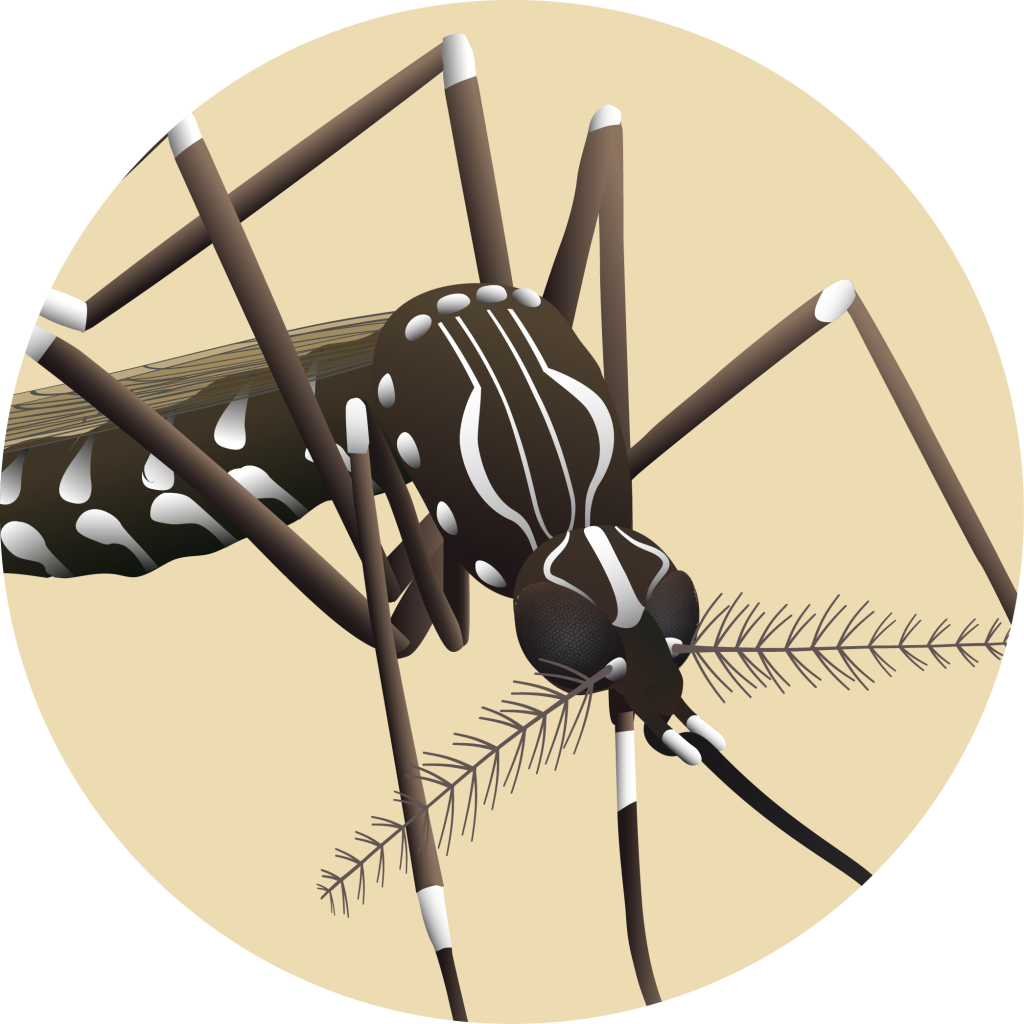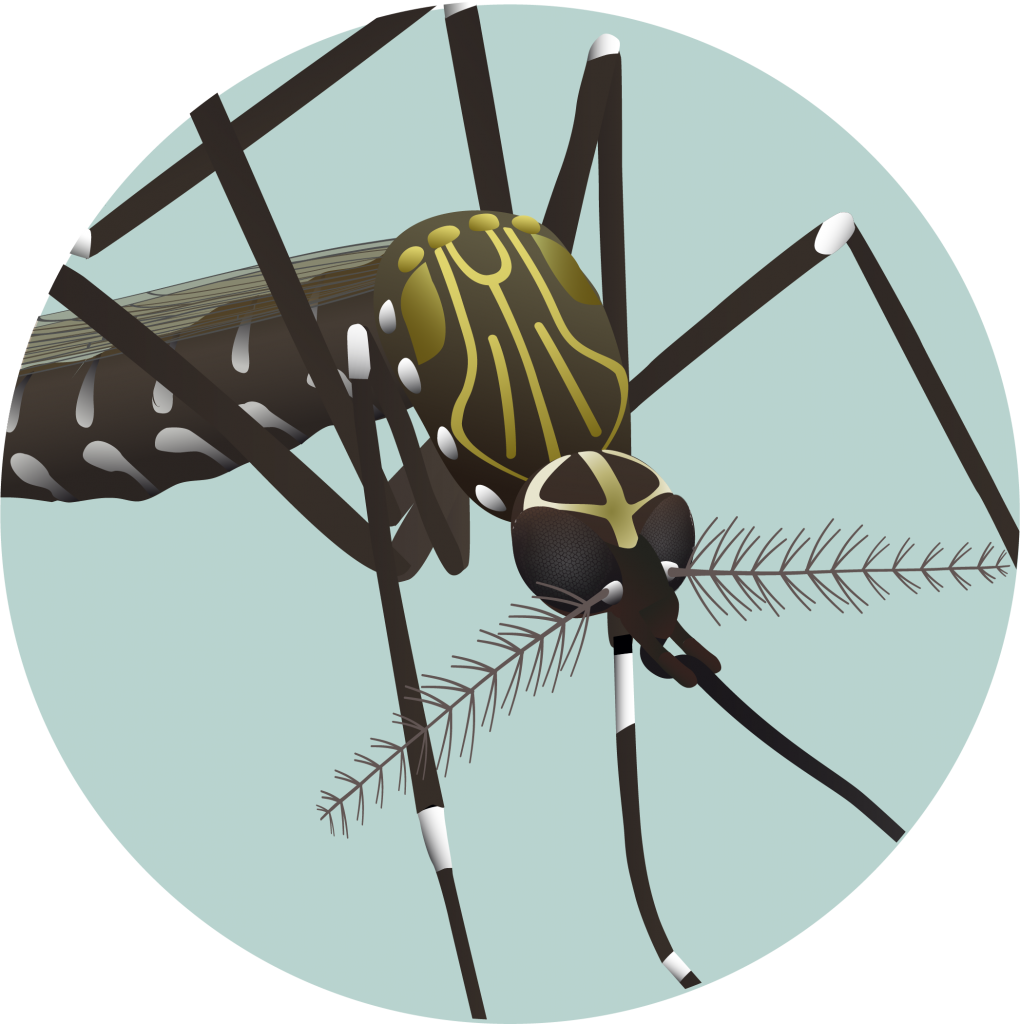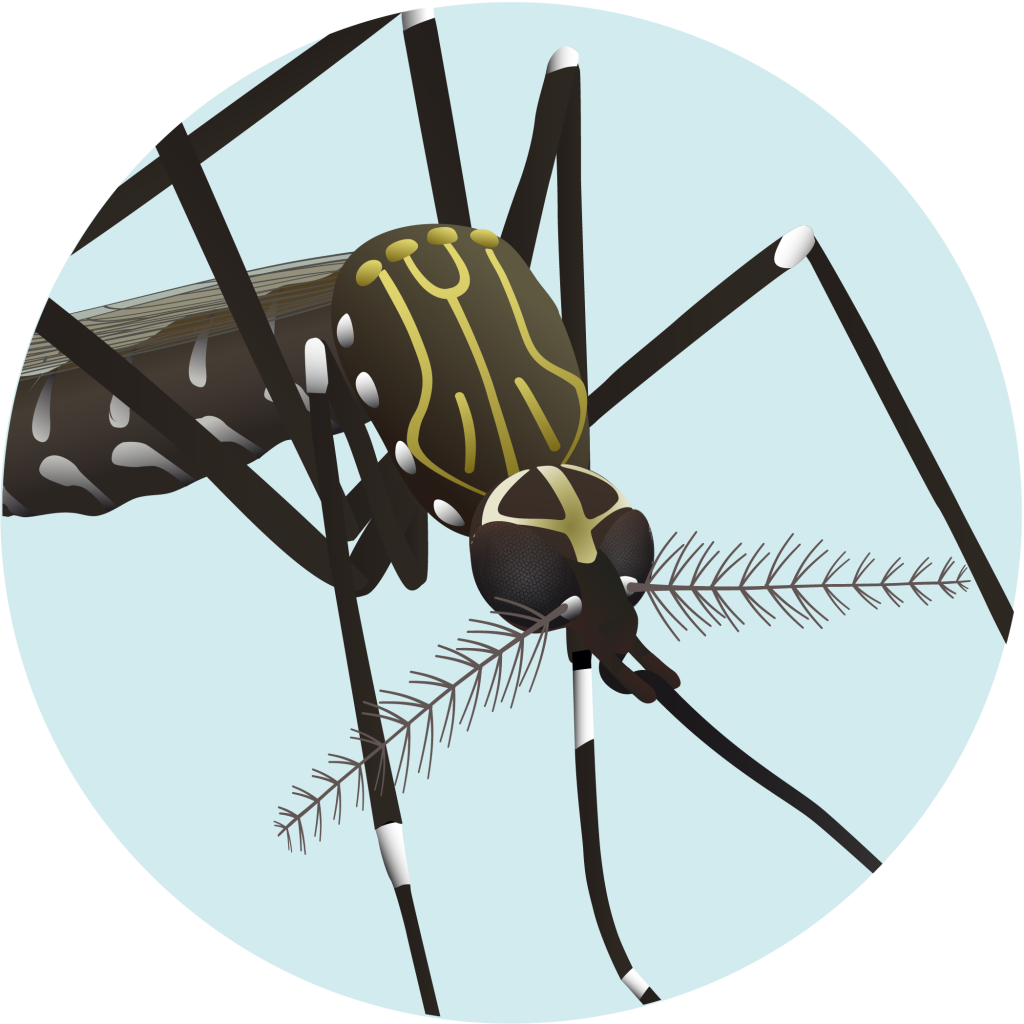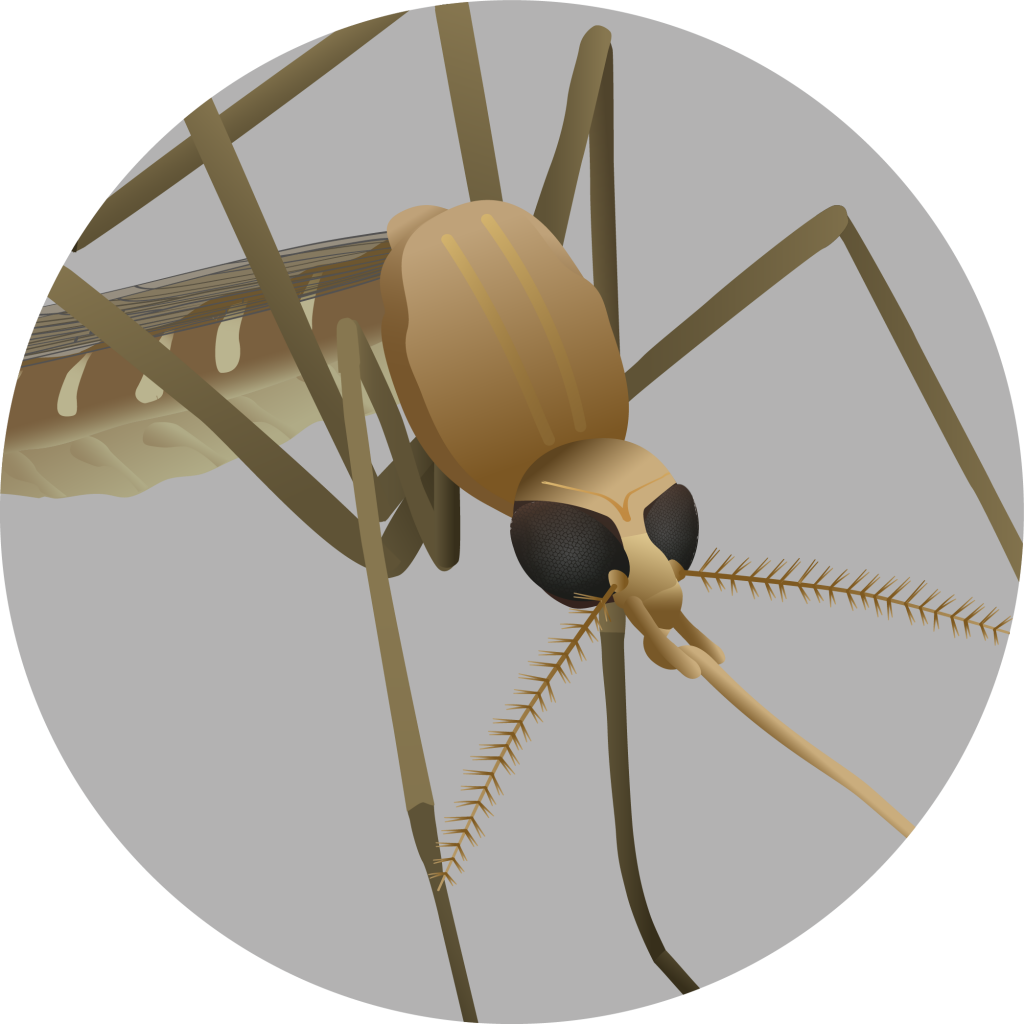Aedes albopictus, Tiger Mosquito
The tiger mosquito is native to Southeast Asia. In the last decades it has invaded many countries, being present today in Asia, Africa, America, Australia and Europe. Globalization has allowed its passive expansion by sea and land, the transport of used tires and plants has contributed to its invasion.
It came to Europe in 1979, entering Albania, in 2004 it was detected for the first time in Spain in the province of Barcelona. Currently the species has been reported in Albania, Austria (not established to date), Belgium (not established to date), Bosnia & Herzegovina, Bulgaria, Croatia, Czech Republic (not established to date), France (including Corsica), Georgia, Germany, Greece, Hungary, Italy (including Sardinia, Sicily, Lampedusa, and other islands), Malta, Monaco, Montenegro, the Netherlands (not established to date), Romania, Russia, San Marino, Serbia (not established to date), Slovakia (not established to date), Slovenia, Spain, Switzerland, Turkey and Vatican City.
What does the tiger mosquito look like?
It is a small black mosquito, between 6-9 mm in length. It can be recognized by having a single white line on the back of the head and thorax (1). Its legs are black with white spots that give it a zebra-like appearance (2).
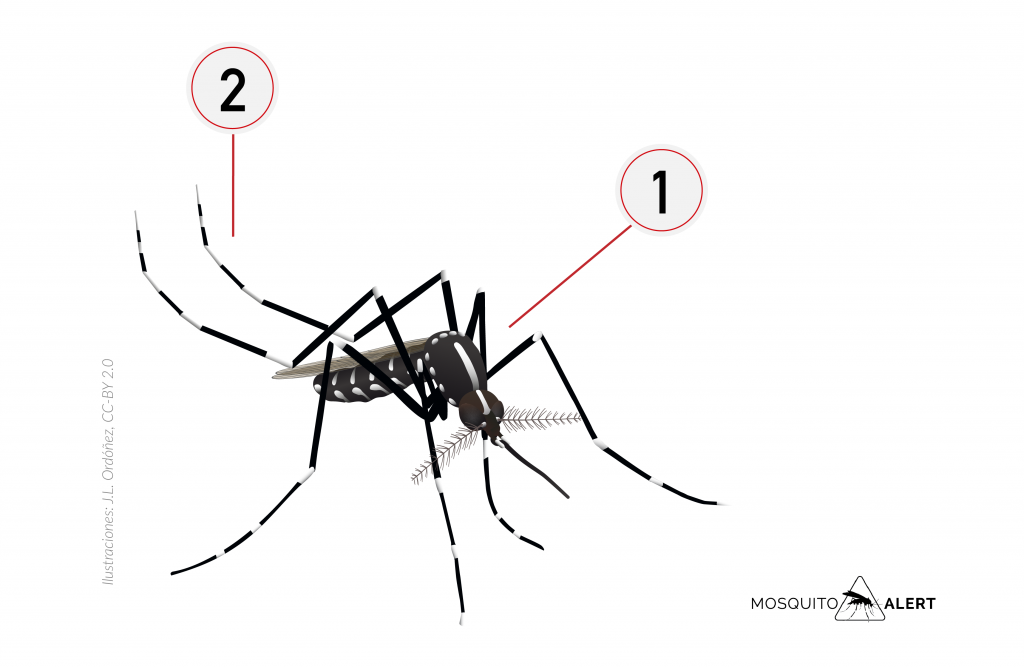
Unlike other mosquitoes, the tiger mosquito is diurnal, with great activity in the early morning and especially in the afternoon until sunset. It is in these periods when it usually itches.
Although it also enters houses, it is closely linked to outdoor spaces, where it finds vegetation among which to hide to rest. Its ideal habitat is humid and shady corners. In them, in addition to finding a refuge, they usually find artificial places to breed.
Females use all kinds of natural or artificial containers to hold a little water. Pot dishes, vases, buckets, rain gutters, any object that may contain water is susceptible to being used by the tiger mosquito to reproduce because the females will deposit their eggs on their walls, above the water level. These eggs are tolerant to dry periods, and will hatch when covered in water.
They are not great fliers, so they are not far from the place where they were born, especially if they have everything they need there: shelter, shade, blood and water to reproduce. They move a radius of between 200 and 500 meters from their breeding place.
Tiger mosquito biting habits
As in all mosquitoes, only the females bite. They do this because they need blood proteins for the development of eggs.
Unlike other mosquitoes, the tiger mosquito can bite multiple times for a single meal. So a single mosquito can cause a few welts. Its activity is concentrated during sunrise and in the afternoon, stretching until twilight.
Its low flight leads to itching mainly in the legs, being able to sting the ankles through the socks. However, it cannot pierce jeans or thick clothing, resulting in a defense against the mosquito. Sometimes it may seem that you can go through these garments because you get bites even while wearing them. What happens may be rather that the mosquito has been able to get into the pants from the ankles to get bite on the leg. This is a result of their attraction to darkness and black.
Period of activity
The tiger mosquito activity season begins in late April and can last until early November. The rains, which provide them with places to breed, and the high temperatures favor the growth of their populations. Its abundance is usually maximum in late August and September when storms are again important in the Iberian Peninsula.
The environmental temperature determines the speed of development of the mosquito. The higher the temperature, the faster the transition from one development phase to another. At high temperatures they can complete the biological cycle in six days. Throughout a mosquito season there is time for several generations. The tiger mosquito owes a part of its success in continental climates to its ability to hibernate, which it does by means of special delayed hatching eggs, which appear from November. It has been verified that in more southern latitudes than Alicante this capacity is no longer necessary thanks to the goodness of the winter climate.
Diseases transmitted by the tiger mosquito
The tiger mosquito is considered a public health problem not only for the irritation caused by its bites but for its ability to transmit numerous diseases.
In the laboratory it has been experimentally shown that it is capable of infecting up to 22 different viruses. These include Rift Valley fever, Japanese encephalitis virus, or West Nile virus. In practice, the main diseases that can be transmitted in our environment are dengue, Zika, chikungunya and yellow fever.
In Europe, the mosquito has been responsible for outbreaks of chikungunya in Italy and France. France, Croatia and Spain have also had indigenous cases of dengue transmitted by the tiger mosquito. In 2019, the first autochthonous Zika cases in Europe were found in France, with the tiger mosquito involved in them.
The species in addition to feeding on people bites a variety of animals, mainly mammals. This versatility increases your health risk by being able to transmit pathogens from animals to humans and vice versa.
The mosquito can also transmit canine dirofilariasis disease, also called the “heartworm,” a disease caused by parasitic nematodes. The parasite mainly affects dogs and other canids, such as wolves, foxes, and coyotes. Although it can also affect humans, the chances of this happening are very low.
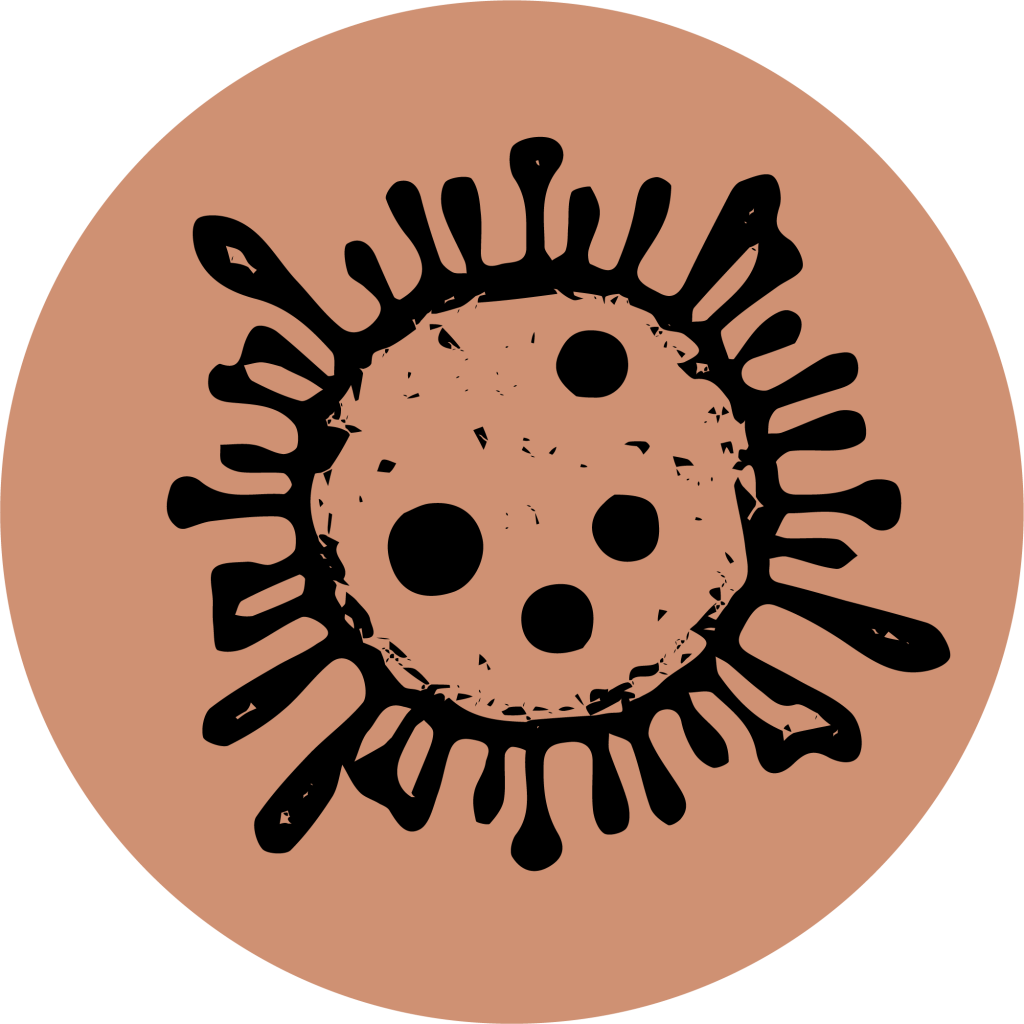
Chikungunya
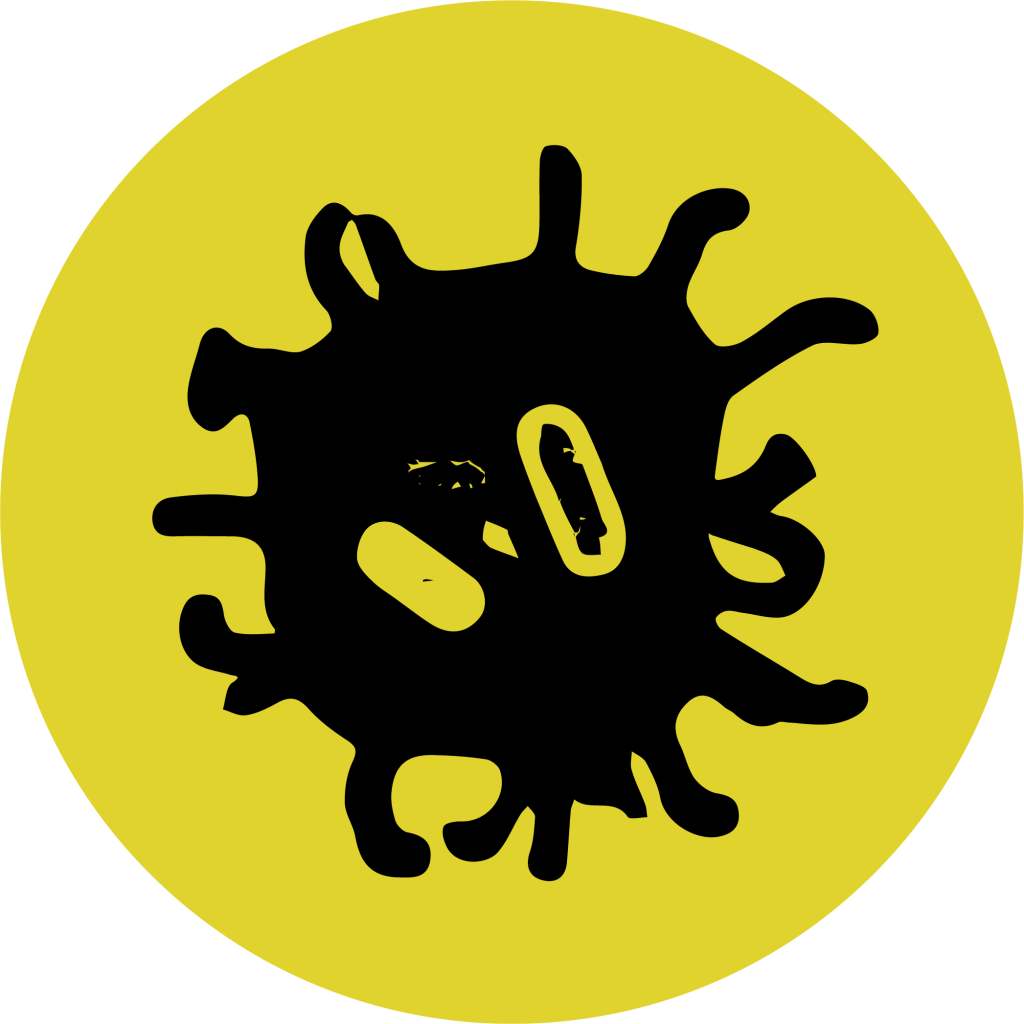
Yellow fever

